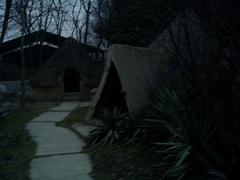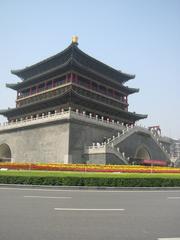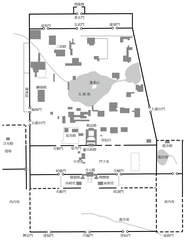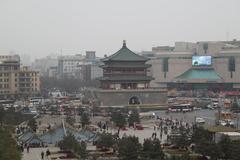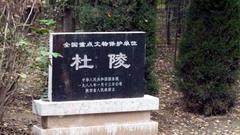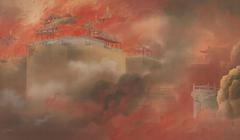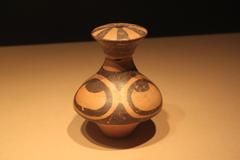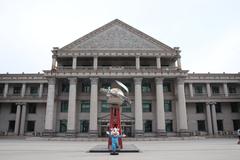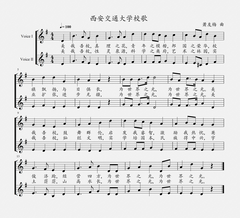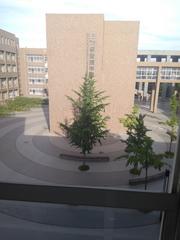
Visiting Tang Paradise Guide: Hours, Tickets, History & Tips
Date: 01/08/2024
Introduction
Tang Paradise, also known as Datang Furong Garden, is a cultural theme park that magnificently reconstructs the royal garden of the Tang Dynasty, offering visitors a glimpse into one of China’s most illustrious historical periods. Located in Xi’an, a city renowned for its rich historical heritage, Tang Paradise spans approximately 165 acres, featuring a blend of serene gardens, intricate architecture, and immersive cultural experiences. The park was officially opened to the public on April 11, 2005, and has since become a prominent cultural landmark, attracting tourists from around the globe (Tang Paradise).
The significance of the Tang Dynasty (618-907 AD) in Chinese history cannot be overstated. Often referred to as a golden age, this period witnessed unparalleled advancements in culture, technology, and governance. Tang Paradise meticulously emulates the architectural and cultural essence of this era, with its design overseen by esteemed architects such as Zhang Jinqiu and Japanese garden master Hiroshi Akiyama (WestChinaGo). The park is divided into various thematic zones, each dedicated to different aspects of Tang culture, including imperial traditions, poetry, tea culture, and more. Visitors can also enjoy vibrant performances, such as the water dance and light show “Datang Dream Pursuit” and the multidimensional dance drama “Dream Back to the Tang Dynasty,” which bring the historical and cultural narratives of the Tang Dynasty to life (Tang Paradise).
Table of Contents
- [Historical Background](#historical-backgroundhistorical-background)
- [Architectural Significance](#architectural-significancearchitectural-significance)
- [Cultural Significance](#cultural-significancecultural-significance)
- [Events and Performances](#events-and-performancesevents-and-performances)
- [Visitor Information](#visitor-informationvisitor-information)
- [Travel Tips](#travel-tipstravel-tips)
- [FAQ](#faqfaq)
- [Conclusion](#conclusionconclusion)
- [References](#referencesreferences)
Historical Background
Datang Furong Garden, built on the site of the original Tang Dynasty royal garden, dates back to the 7th century. The Tang Dynasty (618-907 AD) is considered a golden age in Chinese history, marked by cultural flourishing, economic prosperity, and advancements in art and literature. The original garden was a symbol of the dynasty’s grandeur and was used by the royal family for leisure and entertainment.
The modern Datang Furong Garden was reconstructed to emulate the architectural style and cultural essence of the Tang Dynasty. It was officially opened to the public on April 11, 2005, and has since become a prominent cultural landmark in Xi’an. The garden spans approximately 1,000 mu (about 165 acres), including 300 mu of water area and 440 mu of green space (Tang Paradise).
Architectural Significance
The garden’s architectural design meticulously recreates Tang Dynasty aesthetics, characterized by intricate wooden structures, curved roofs, and elaborate decorations. The overall planning and design were overseen by Zhang Jinqiu, an academician of the Chinese Academy of Engineering, while the landscape design was crafted by Japanese garden master Hiroshi Akiyama (WestChinaGo).
Datang Furong Garden features more than 20 scenic spots, including Ziyun Building, Ladies Hall, Lu Yu Tea House, Apricot Garden, Caixia Corridor, Qujiang Liuyin, Beauty Walk, Tangshi Gorge, and Zhuyu Terrace. Each spot showcases different aspects of Tang Dynasty culture and art, creating an immersive experience for visitors (WestChinaGo).
Cultural Significance
Datang Furong Garden serves as a cultural window into the Tang Dynasty, offering visitors a comprehensive glimpse into the era’s rich heritage. The garden is divided into 14 cultural zones, each dedicated to aspects of Tang culture, including imperial culture, women’s culture, poetry, imperial examinations, tea culture, song and dance, food culture, folk culture, diplomatic culture, Buddhist culture, Taoist culture, children’s play, gate landscape, and water show performance areas (Tang Paradise).
One of the garden’s notable features is the large-scale water screen that plays movies, creating a unique optical effect that enhances the viewing experience. This innovative use of technology adds a modern touch to the historical setting, making it a popular attraction for visitors (Tang Paradise).
Events and Performances
Datang Furong Garden is renowned for vibrant cultural events and performances, which bring Tang Dynasty history and traditions to life. The garden hosts various shows, including the large-scale water dance and light show “Datang Dream Pursuit” and the grand multidimensional situational dance drama “Dream Back to the Tang Dynasty.” These performances are designed to be both visually stunning and culturally enriching, providing visitors with an unforgettable experience (Tang Paradise).
In addition to regular performances, the garden hosts significant cultural events such as the East Warehouse Drum Music, Shangsi Festival, and the New Year Lantern Festival. These events celebrate traditional Chinese arts and customs, offering a platform for the continued development and appreciation of intangible cultural heritage (Tang Paradise).
Visitor Information
Visiting Hours: Datang Furong Garden is open daily from 10:00 AM to 10:00 PM. Recommended visit durations range from 2 to 4 hours.
Tickets: Admission fees vary by season. Peak season (March to November) tickets are priced at 120 yuan per person, while off-season (December to February) tickets are 90 yuan per person. Starting from August 1, 2024, admission will be free (Tang Paradise).
Accessibility: The garden is easily accessible by public transportation, including taxis and Xi’an Metro Line 4, which stops at DaTang FuRongYuan Station. Various bus routes also lead to Tang Paradise West Gate Station (WestChinaGo).
Nearby Attractions: Visitors can explore other historical sites in Xi’an, such as the Terracotta Army, the Ancient City Wall, and the Big Wild Goose Pagoda.
Travel Tips
- Guided Tours: Consider joining a guided tour to gain deeper insights into the garden’s historical and cultural significance.
- Photography: The garden offers numerous picturesque spots. Don’t miss the chance to capture the beauty of Tang architecture and landscapes.
- Special Events: Check the garden’s official website for information on special events and performances during your visit.
- Best Time to Visit: Spring and autumn are ideal times to visit, offering pleasant weather and beautiful scenery.
FAQ
What are the opening hours of Datang Furong Garden?
The garden is open daily from 10:00 AM to 10:00 PM.
How much are the tickets for Datang Furong Garden?
Peak season tickets are 120 yuan per person, and off-season tickets are 90 yuan per person. From August 1, 2024, admission will be free.
How can I get to Datang Furong Garden?
The garden is accessible by taxis, Xi’an Metro Line 4 (DaTang FuRongYuan Station), and various bus routes to Tang Paradise West Gate Station.
What are some nearby attractions?
Nearby attractions include the Terracotta Army, the Ancient City Wall, and the Big Wild Goose Pagoda.
Conclusion
Tang Paradise in Xi’an stands as a testament to the enduring legacy of the Tang Dynasty, offering an unparalleled blend of historical authenticity and modern cultural experiences. The park’s meticulous reconstruction, overseen by renowned architects, and its array of thematic zones provide a comprehensive glimpse into the grandeur of the Tang era. From its serene gardens and intricate architecture to its vibrant cultural performances, Tang Paradise captivates and inspires visitors, making it a must-visit destination for those seeking to explore the essence of Chinese civilization. With ongoing events and performances that celebrate Tang traditions, the park continually enriches the cultural landscape of Xi’an and attracts tourists from around the world (Tang Paradise). Whether you are a history enthusiast, a cultural explorer, or simply looking for a picturesque location to enjoy, Tang Paradise offers an unforgettable journey through one of China’s most celebrated historical periods.

